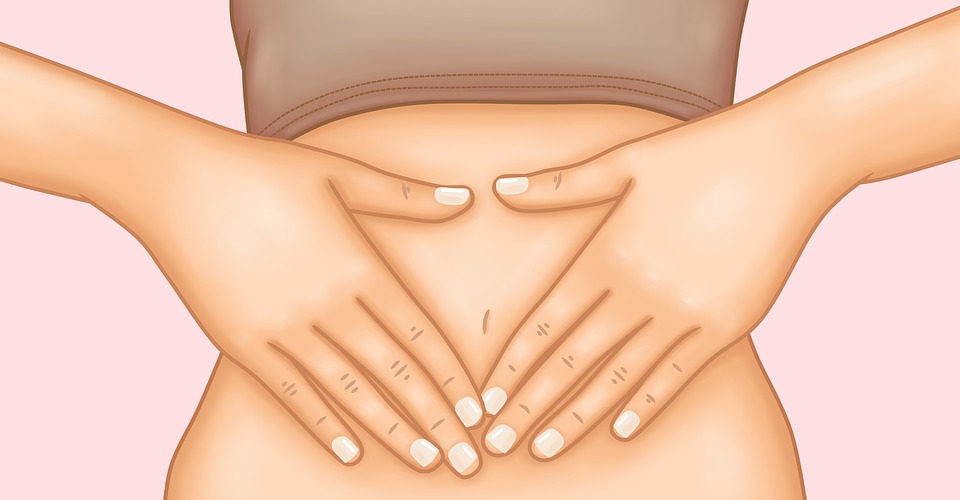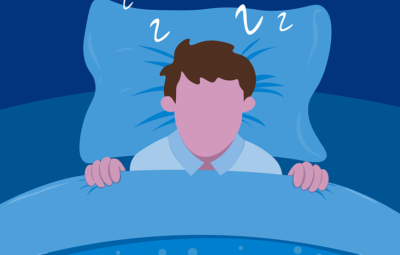We all have those people in our lives who seem to be able to consume whatever they like without gaining an ounce of extra weight and still managing to sport washboard abs. Many times we attribute this to having good genes or a quick metabolism. How can one increase their metabolism quickly? Can one modify their metabolism to increase losing fat?
What is Metabolism?
Although we may focus on the impacts of metabolism on our weight, it is actually an intricate system that is responsible for the various chemical processes that are necessary for human life.
Metabolism is not merely a single action that is simple to modify but rather a mixture of bodily procedures that are taking place in each of the cells all around your body. The main purpose of this is not to preserve bodily weight; it is to enable survival by transforming food and stored energy into useful power that is necessary to breathe, think, circulate blood, move, and stay alive.
What is Basal Metabolic Rate (BMR)
When people talk about their metabolism, what they usually mean is the capacity of their body to put fuel to use, and this is largely established by their basal metabolic rate (BMR) or resting metabolic rate (RMR).
The number of calories your body needs for essential bodily functions when it is not active is your basal metabolic rate. This does not take into account any extra calories needed for physical activity, digestion of food, and activities of daily living.
Basal metabolic rate is the foundation for the total amount of energy that you consume for daily activities, and it takes up about 70% of your metabolism. This is the major factor that makes your body burn calories, and it is a vital element of any weight loss plan.
Changing your basal metabolic rate would have the greatest effect on your metabolic rate and ability to shed pounds.
The amount of energy your body requires is linked to your body weight, most significantly. The more you weigh, the more calories you need. A lot of people reckon that slimming down inhibits or reduces the rate of metabolism, but this is untrue. Reducing caloric intake will result in weight reduction, which in turn diminishes the number of calories required.
To simplify, if you gain weight, your metabolism increases. If you lose weight, your metabolism decreases. The quantity of calories that one requires in order to maintain their weight is variable.
How to Burn Fat
You might frequently come across certain diet plans, exercises, meals, and so on that promise that they can change you into an efficient fat-burning device! It is feasible to enhance your capacity to draw on fat for energy; nevertheless, shedding fat and using fat for fuel are not necessarily related.
It is intricate how your body metabolizes fat so that it can be used as energy (otherwise known as fat oxidation) since this entails multiple hormones and activities. The body is regularly in the process of alteration – implying that there is a regular cycle of breaking down and rebuilding your cells, proteins, and fats as part of your daily routine. You are continually utilizing fat for energy, even when inactive. Fat is a plentiful source of energy that your body makes use of frequently.
Boosting your ability to oxidize fat doesn’t necessarily equate to shedding body fat. A reduction in fat occurs when you consume fewer calories than you would require to sustain your metabolism and supply your day-to-day energy requirements. Fat is used up throughout the day, and with less calories being consumed, less fat is replenished, resulting in overall fat loss.
Saving fat from food does not necessarily mean that one will increase their overall fat level. If you limit your caloric intake, your body will still use the fat for fuel during the course of the day, and your fat percentage will remain unchanged.
Apart from that, fat metabolism is only a part of the whole picture.
Boosting your skill at getting rid of fat does not typically raise your metabolism in general, nor does it necessarily result in fat loss.
How to Speed Up Metabolism
1. Build Muscle Mass
Muscle gain typically means weight gain. Increasing in size would lead to an increase in metabolism due to the need for extra energy to keep the bigger body in motion. Most of us would rather build muscle rather than fat for various motives.
Your muscles burn more calories than your fat does, accounting for about 20% of your total energy requirements in contrast to only 3% for fat. Muscle’s metabolic rate is much higher than what is believed, with it burning between 4.5 to 7.0 calories a pound in a day, instead of the assumed 1 to 3 calories a pound per day. This would result in an increase of 22 to 35 calories each day by putting on an extra 5 pounds of muscle – even though this might appear to be a meager amount, the impact could be big in the long run.
This estimate does not take into account the amount of calories burned during exercise. Possessing more muscle can produce a slightly higher calorie burn when you are at rest. Yet, it may also lead to being more muscular and swifter – permitting you to follow a more challenging workout routine and burn more calories when active also.
As well, muscle occupies less room than fat, which explains why two people who weigh the same but possess different body fat percentages can look drastically distinct.
Importantly, building muscle could lead to an increase in the weight indicated on a scale; however, this does not indicate that your health is not improving, your body is not becoming more slender, or that you have failed to make accomplishments. Capturing progress pictures, utilizing a measuring tape, or monitoring your body fat percentage may be better for demonstrating precisely how successful you are.
2. Lift Weights
Strength training is a beneficial method for keeping lean muscle and promoting muscle development to enhance your physique – regardless of whether your objective is to lose, gain or sustain your weight. In two experiments, the rate of metabolism improved by 7% after two different 16 and 24 week courses of weight lifting, likely resulting from adjustments in lean mass.
Exercising with weights could also help to raise your calorie expenditure throughout the day, even after you complete your workout. Stressing your muscles through physical activity necessitates a rest phase since it is during this period that you will experience the metabolic advantages. A research project observed a rise in metabolism lasting up to 38 hours after doing strength exercises.
3. Pile On the Protein
Studies have demonstrated that eating a sufficient amount of protein can speed up your metabolism, resulting in the burning of around 150 to 200 calories daily, based on what Jeff Hampl, Ph.D., R.D., a representative for the American Dietetic Association, has stated. Protein is composed primarily of amino acids, which take the body more energy to digest than fat and carbohydrates, thus causing you to burn more calories in the digestion process.
You do not have to restrict yourself to consuming a large amount of protein, such as the Atkins diet. Ensure that a proportion of 10-35% of your daily calorie intake is derived from protein. If you are trying to stick to an eating plan of 1,800 calories a day, you should take in 360 to 630 calories from lean proteins, including fish, poultry, low-fat cheese, yogurt, and beans. Hampl recommends integrating a portion of protein into each meal and snack, such as nuts, canned tuna, or a piece of reduced-fat string cheese.
4. Nibble All Day
It seems contrary to logic; why would you eat regularly if you wanted to shed pounds? Consuming five to six smaller meals in a day rather than three larger meals will keep your metabolism continually working. Peeke explains that this will stop you from not eating for a long period of time which would cause you to consume too much food. It’s best to eat something at least every four hours and make sure each time you do your meal includes a source of protein for a metabolism increase. If you commence your day with a breakfast that has some fibers, for instance, cereal and fruit, have a morning snack, for instance, yogurt and fruit; take a lunch that contains four ounces of fish or chicken with a leafy green salad; indulge in a snack of a banana and some low-fat cheese in the latter part of the afternoon; and then finish off the day with a light dinner composed of four to six ounces of lean protein such as turkey, salmon with some steamed vegetables.
5. Go for Good Carbs
Eating food with a high level of refined carbohydrates, including bagels, white bread, and potatoes, stimulates the production of insulin, which can lead to the deposit of fat in your body as well as a possible slowing of your metabolism, according to obesity specialist Louis Aronne, M.D., from the New York Presbyterian Weill Cornell Medical Center. He suggests that people opt for food featuring more fiber instead. He emphasizes the importance of including carbohydrates in your nutrition, yet vegetables, fruits, and whole grains should be prioritized since they do not affect the levels of insulin much.
6. Skip Alcohol
Have you considered drinking a cocktail or two before dinner? Think again. Studies have shown that consuming an alcoholic beverage prior to a meal increases the amount of food consumed by around 200 extra calories. Having a beverage with your meal is not recommended either: Another study has come to the conclusion that the body processes alcohol before anything else, meaning that the calories in the remainder of the meal are probably going to end up being kept as fat. If you want an alcoholic drink, opt for a glass of wine that has only 80 calories or drink a white-wine spritzer which is two ounces of wine mixed with two ounces of seltzer to help reduce the calorie count.
7. Drink Milk
Women who consumed low-fat dairy products at least three to four times a day lost 70 percent more body fat than those who didn’t, according to a paper published in the January 2003 edition of the American Society for Nutritional Science’s Journal of Nutrition. One explanation for this is that calcium, combined with other components of dairy, increases your metabolism, motivating your body to use up excess fat quicker, as concluded by Michael Zemel, Ph.D., the director of the Nutrition Institute at the University of Tennessee in Knoxville. And no, fortified o.j. Won’t do the trick. The most significant health benefits are derived from dairy products in comparison to other calcium-containing foods (like broccoli), calcium-enhanced products (for example, orange juice), and supplements. Zemel’s research indicates that female individuals will see the best results in terms of burning fat when they have 3 servings of dairy and a daily calcium intake of 1,200 milligrams.
8. Pump Iron
Specialists claim that weightlifting is the most efficient way to increase your resting metabolism. As you age, your basal metabolic rate tends to decline. However, weight training can increase it again: One pound of muscle has the potential to burn up to nine times more calories than one pound of fat, according to fitness specialist Westcott. A 130-pound woman who is physically strong will use up more calories than an inactive 120-pound woman of the same height. Strength training on a regular basis can boost your resting metabolic rate by 6.8 to 7.8%. If your weight is 120 pounds, you may be able to burn an additional 100 calories every day while watching television.
Do you feel like you don’t have enough time to go to the gym? It is possible to achieve noteworthy achievements with only two 15-minute strength training sessions each week. Westcott’s findings, which were included in the publication Medicine & Science in Sports & Exercise in January 1999, disclosed that doing a single set of ten repetitions will have an almost identical effect on muscle growth as performing three sets, provided that the movement is done until ultimate muscular exhaustion. Weightlifting can also briefly increase your metabolism. When women engage in weight-lifting, their metabolisms stay active for up to two hours after the conclusion of their last repetition of a bench press. They could burn an additional 100 calories, which was documented in a study published in June of 2001 in Medicine & Science in Sports & Exercise.
9. Chill Out
Long-term stress can make you fat, studies have found. When you have long-term stress, your body is flooded with hormones related to stress, which causes fat cells deep in your abdomen to swell and cause fat to be stored. This is according to Peeke. This extra fat stored inside of your abdomen is more likely to cause diseases such as heart problems, diabetes, and cancer, which I refer to as ‘toxic weight’. Furthermore, it’s likely that heightened stress hormones play a role in causing you to eat too much.
So what’s a frazzled woman to do? Create a compilation of activities that help you relax: petting your pup, keeping a diary, and playing classical tunes. Set aside 10-15 minutes per day to take part in a pleasurable activity.
10. Try a Low-Glycemic Diet
Rather than omit carbohydrates or eat a low-fat diet, a better approach would be to increase your metabolic rate with a diet full of vegetables, beans, and legumes to also stop your glucose from rising sharply. It’s generally believed that losing weight is all about controlling calorie intake and ensuring high levels of energy expenditure. However, Dr. Aunna Pourang has emphasized that the quality of those calories is also significant. A 2012 study discovered that a low-carb diet was linked to a higher metabolic rate, though at the cost of a rise in cortisol, a hormone typically associated with stress. Researchers came to the conclusion that the low-glycemic diet was the most effective.
How to Get a Fast Metabolism
Frequently, in fashionable nutritious suggestions, we tend to take one part of the equation and use it for the entire narrative; however, swapping one part of your metabolism doesn’t imply you can get around the entire system. Your body is very good at maintaining equilibrium and prefers a state of balance.
There is no single solution or mysterious method to increase your metabolic rate quickly. The complexity of metabolic processes and the human body is not a factor when it comes to how your decisions influence your metabolism to shed pounds.
Do not depend on tricks or specific foods; determine how many calories you should consume per day, and keep your consumption consistent. This is the secret! The most effective approach to ensure you meet your dietary objectives and witness actual progress is to be responsible for your own actions. Taking steps to make significant changes to your eating habits is a great place to start.







